2020 年广东省广州市中考英语试题及答案
本试卷共四大题,12 页,满分 110 分。考试时间 120 分钟。
一、语法选择(共 15 小题:每小题 1 分,满分 15 分)
阅读下面短文,按照句子结构的语法性和上下文连贯的要求,从 1〜15 各题所给的 A、
B、C 和 D 项中选出最佳选项,并在答题卡上将该项涂黑。
Deep in the forest lives David, who loves books. As soon as he reads one book,
he brings home
1
.
Soon the house
2
. books. His wife, Alice, is angry. You
3
.do
something!”
David thinks hard and has
4
. idea. “I can bring my books into the faraway
hills and share
5
.I have with the children.”
Every week, David sets off across the countryside to faraway villages with his
two donkeys. Early
6
a sunny morning, David and his donkeys stop at a river
7
.Then, from deep in the shadows, a bandit (山贼)jumps out! “Please let us
pass,” David says. “The children
8
.”The bandit takes one book and shouts,
“Next time I want
9
!”
They move on until at last, David sees some houses below. The children run to
meet
10
.David reads them a story first.
11
the story ends, it's time
for everyone to choose a book. The children hold their books close as they say
good-bye and run home
12
. David and his donkeys head back, over and around
the hills, and into the sunset.
At home, Alice feeds her hungry husband and the donkeys. But then, instead of
13
,David picks up his book,
14
reads deep into the night. And far away in
the hills, candles and lanterns bum as the children read borrowed books deep into
their night,
15
.
�
1. A. other
B. another
C. the other
D. the others
2. A. fills with
B. filled with
C. is filled with
D. was filled
with
3. A. must
B. could
C. would
D. may
4. A. a
B. an
C. the
D./
5. A. what
B. who
C. why
D. how
6. A. in
B. on
C. at
D. for
7. A. drink
B. drinking
C. drinks
D. to drink
8, A. wait
B. waited
C. are waiting
D. have waited
9. A. some money
B. any money
C. some moneys
D. any moneys
10. A. he
B. his
C. him
D. himself
11. A. Before
B. When
C. If
D. Because
12. A. cheer
B. cheerful
C. cheerfully
D. more
cheerful
13. A. sleep
B. slept
C. sleeps
D. sleeping
14. A. and
B. but
C. or
D. so
15. A. either
B. neither
C. also
D. too
二、完形填空(共 10 小题;每小题 1.5 分,满分 15 分)
阅读下面短文,掌握其大意,然后从 16〜25 各题所给的 A、B、C 和 D 项中选出最佳选
项,并在答题卡上将该项涂黑。
One sunny morning, when Zebra(斑马)visited the river for a cool drink, he
heard a tiny voice. “Help me,Zebra!”
�
Zebra looked around and found Wasp(黄蜂) 16
in a spider web in a thornbush
(荆棘丛).Carefully,Zebra reached into it,but the thorns
17
him. “Ouch!”
Zebra stepped back and was leaving.
“Please help me,”said Wasp.“One day I will
18
your help.”
Zebra laughed. “I’m fast and strong. Besides, I have a big family. Why would
I need help from a
19
wasp?”
“Please try one more time,” Wasp said. Zebra knocked at the web.
20
,this
time it was enough to free Wasp.“Try to stay out of trouble,” Zebra said. “I
might not be nearby the next time a spider gets
21
.”Then he left.
All day, Zebra stayed with his family until he noticed his favourite fruit
—some berries! The hungry Zebra ran to
22
the berries.
Wasp was resting in the bushes when she saw Zebra. She also found Lion biding
quietly ahead. If Zebra got too close to Lion…
Thinking quickly, Wasp flew down and gave Lion a sudden sting. The
23
lion
cried. “Roooooaaar!” Zebra heard the loud cry. In a second, he turned around and
ran back
24
.
A moment later, Wasp flew around Zebra’s head. “Try to stay out of trouble,
Wasp said with a
25
. “I might not be nearby the next time a lion gets hungry.”
16. A. resting
B. playing
C. caught
D. hidden
17. A. hurt
B. hit
C. refused
D. killed
18. A. remember
B. return
C. repeat
D. report
19. A. noisy
B. lazy
C. shy
D. little
20. A. Sadly
B. Suddenly
C. Luckily
D. Strangely
�
21. A. sleepy
B. angry
C. thirsty
D. hungry
22. A. smell
B. taste
C. touch
D. watch
23. A. surprised
B. excited
C. interested
D. bored
24. A. friend
B. family
C. river
D. fruit\
25. A. laugh
B. shout
C. wish
D. promise
三、阅读(共两节,满分 45 分)
第一节 阅读理解(共 20 小题;每小题 2 分,满分 40 分)
阅读下列短文,从 26~45 各题所给的 A、B、C 和 D 项中选出最佳选项,并在答题卡上
将该项涂黑。
(A)
“Amy!Milk!”Mama called.
Milk. It was Amy’s turn to get it. Amy sighed and shut her first-aid(急救)
book.
Amy tied the cow close to a tree. Somewhere down the mountain, some volunteer
doctors were teaching medical skills to village nurses. Amy heard Betty dive off
hours ago. “She should have taken me with her. She thinks I’m too young.”Amy
thought. “But she’s wrong. I am already 15!”
Amy carried the milk back to Mama, then wandered up the road. Roy, a village
boy, was trying to stand on a horse’s back. “No wonder they don’t trust kids
with anything important,” Amy thought.
She had just turned away when she heard a heavy fall and a few cries. Roy was
on the ground. “Roy!”The kids nearby ran towards him. “Get Betty,” one said.
Amy shook her head. “Betty’s gone to the city.”
�
The kids didn’t know what to do. Amy ran to Roy and saw one of his legs out
of shape. A broken leg! She remembered what the first-aid book said about it.
“Victor!” Amy called to one of the boys. “Go get Roy’s mama, and find someone
with a truck,” She turned to the others. “Give me your shirts. We need something
to tie his leg with.”
Amy then found a strong, straight stick. She carefully wrapped the shirts around
Roy’s leg and the stick. Roy cried out in pain. “I know it hurts,” Amy said softly.
“But this will hold it still until you get to the hospital.”
When Amy was done, she looked up and saw Roy’s mama and a man watching beside
a truck. “Thank you,Amy,” Roy’s mama said. Amy helped them lift Roy into the
truck, then they drove down the hillside towards the hospital.
The next day, Betty came to Amy’s home. “I heard what you did,” Betty said.
“You kept your head in an emergency. That’s an important skill.”
Amy’s face turned red. “I was afraid...”
Betty shook her head. “It’s OK for a nurse to be afraid, as long as she has
a clear head. The volunteer doctors are coming tomorrow with vaccines. We need some
more hands. Can you help?”
“I’d love to.” Amy replied at once.
“Come early,then. There is a lot to learn.”
Amy smiled. “I’ll bring my first-aid book.”
26. Why didn't Betty take Amy with her to the medical training?
A. Amy was busy reading.
B. Amy had to milk the cow.
C. Betty left too early in the morning.
D. Betty thought Amy wasn't old
enough.
�
27. What happened to Roy?
A. He fell off the horseback.
B. He was kicked by the horse.
C. He successfully stood on the horseback.
D. He was pulled off the
horseback by the kids.
28. What is the correct order of Amy’s first-aid actions?
a. She found a proper stick.
b. She helped lift Roy into the
truck.
c. She asked the boys for some shirts.
d. She tied the shirts around
the broken leg.
e. She sent someone to get Roy’s mum and a truck.
A. c-e-a-b-d
B. a-c-e-d-b
C. e-c-a-d-b
D.
e-c-a-b-d
29. Why did Betty invite Amy to help the doctors in the end?
A. Amy had similar experiences before.
B. Amy was cool-headed when giving first-aid.
C. Betty regretted not taking Amy to the training.
D. Betty realized that Amy had become a good doctor.
30. Which sentence best describes a lesson from the story?
A. Only trained doctors and nurses can provide first-aid.
B. Knowledge from books can help solve real-life problems.
C. Children need enough practice before they can be helpful.
D. Helping with housework is important to children’s health.
�
(B)
How would you like to build a time machine? Paper, sticks, glue and string are
all you need. Put them together to build a kite. A kite connects you to the past.
No one knows who flew the first kite. It was probably someone in China or perhaps
Indonesia. Indonesia. Indonesian fishermen hung fishhooks on kites and sent them
out to sea to catch fish. Starting 2,000years ago, Chinese farmers flew kites to
welcome the New Year and bring good luck to Earth.
In China, people also used kites during wartime. One Chinese story tells how
soldiers put noise makers on kites and flew them at night over the enemy camp. The
enemies were frightened by the noise and ran away.
About 1,300 years ago, Chinese travelers took kites to Japan. Soon kites filled
the skies there. Kites reached Thailand about 700 years ago. During floods, Thai
farmers flew kites over their fields They hoped the kites would drive away the clouds
and stop the rain. Over time, kites flew their way out of Asia. Today, kites are
a passion all over the world. Kite fens meet at festivals in many parts of the world
and have great fun.
Over the years, Kites have also helped people understand the natural world.
In 1749, for example, thermometers were tied to kites to measure temperatures. In
1906, cameras hanging from kites took pictures of San Francisco, California after
an earthquake. The photos helped people plan what to do.
Kites also helped inventors find out how to make airplanes. The Wright brothers
studied how kites flew, which helped them make the first successful airplane.
Since the ancient Chinese first set their kites into the air, people have loved
flying kites. Kites give us ways to celebrate, relax and explore. So go fly a kite!
Enjoy the feeling of wonder that kite flyers have felt for centuries.
31. According to the passage, in which countries were kites used to make good wishes?
�
A. China and Japan.
B. China and Thailand.
C. Japan and Indonesia.
D. Thailand and Indonesia.
32. According to the Chinese story, the army used kites to___________.
A. make the enemies leave in fear
B. celebrate victories during
wartime
C. stop the enemies from sleeping well
D. carry soldiers to fight against
the enemies
33. The underlined word “passion”in Paragraph 4 means__________.
A. strong love
B. useful machine
C. happy dream
D. common treasure
34. How does the writer develop Paragraph 5?
A. By telling stories.
B. By listing numbers.
C. By comparing facts.
D. By giving examples.
35. What’s the purpose of this passage?
A. To show people how to fly kites.
B. To explain how kites are used in science.
C. To introduce the roles of kites in history.
D. To discuss the difference among kites worldwide.
Five interesting sports
Our most unusual sports from around the world
Every country has a national sport and some popular sports are now played across
the world, However, in most countries, people also play unusual sports, with strange
�
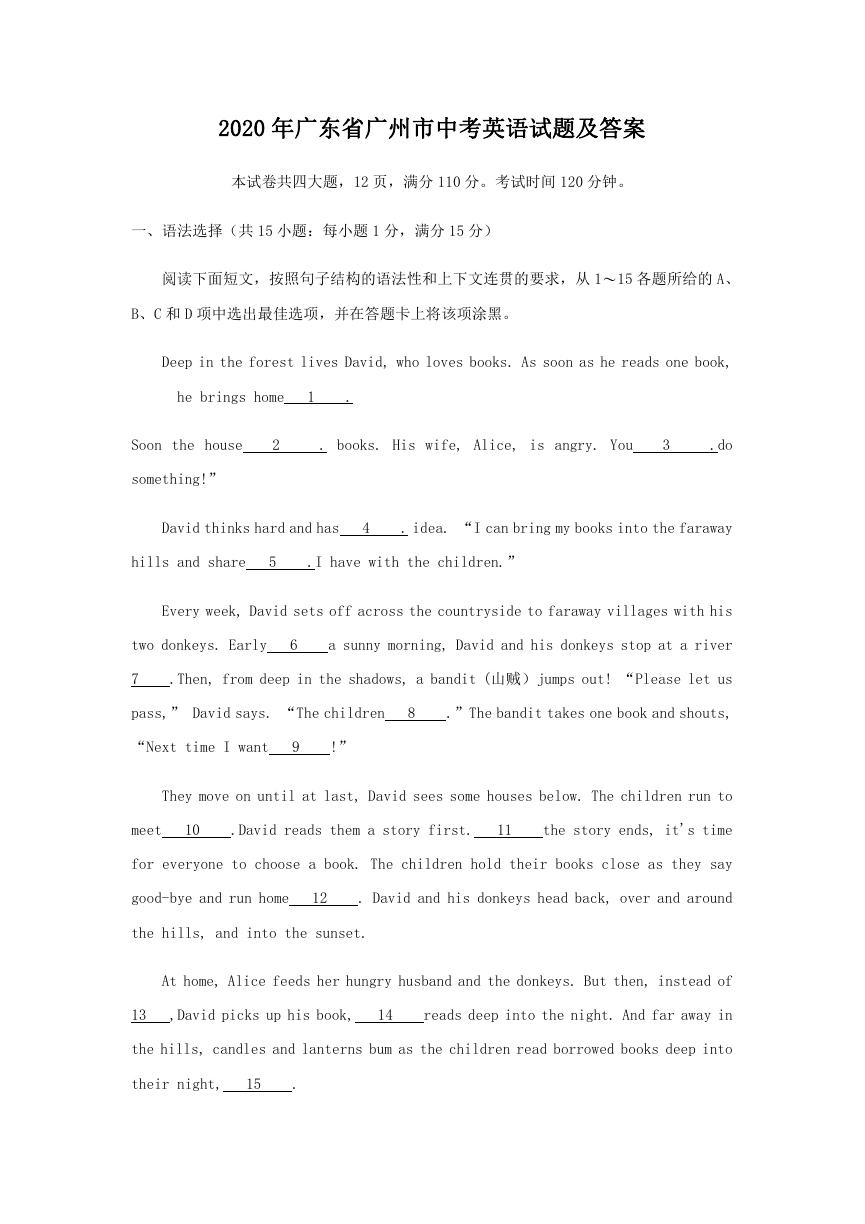

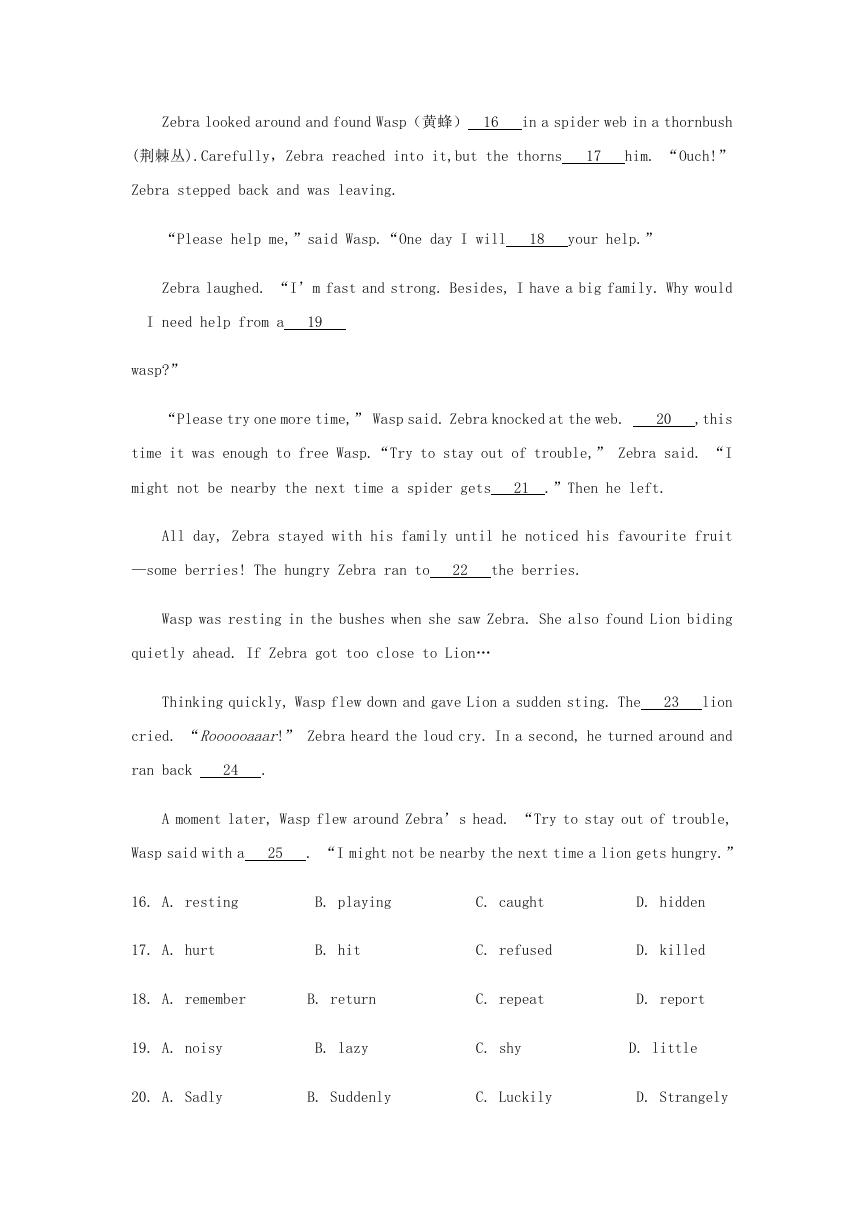

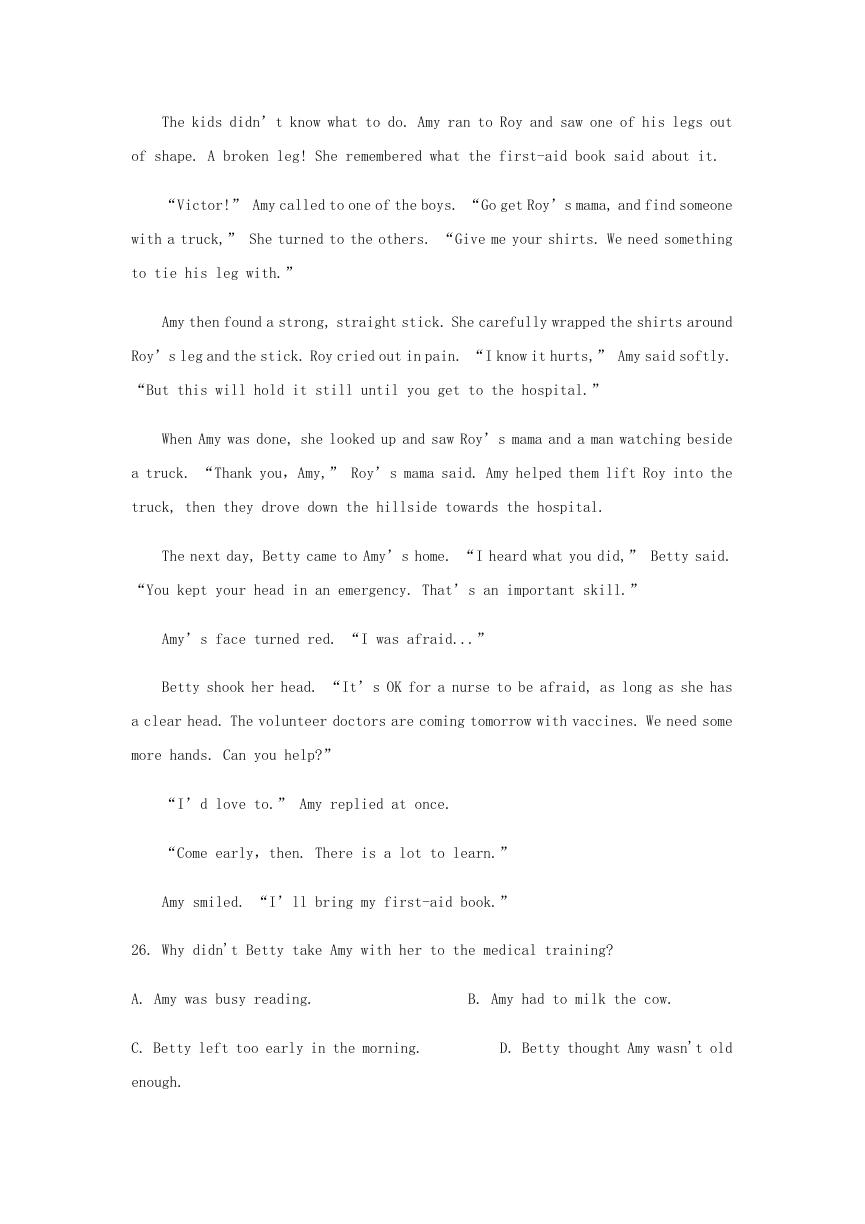
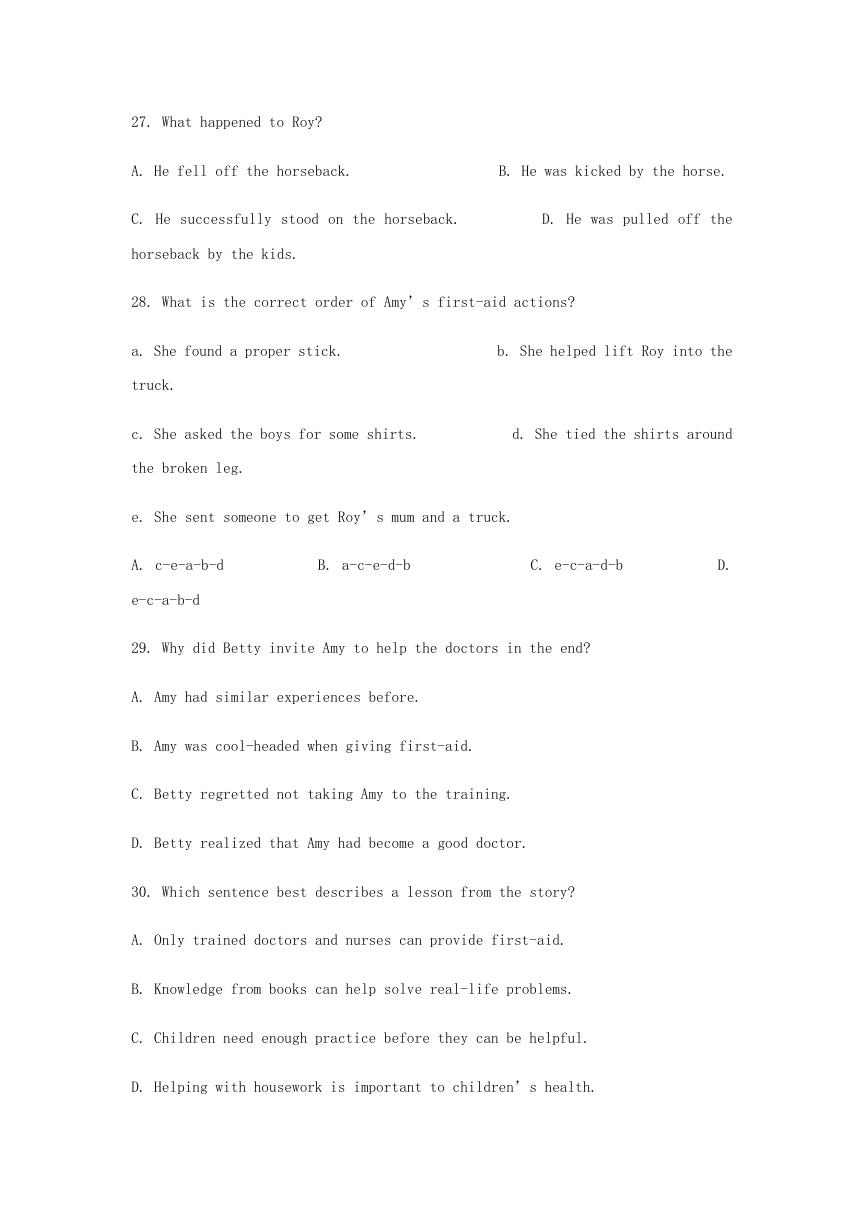
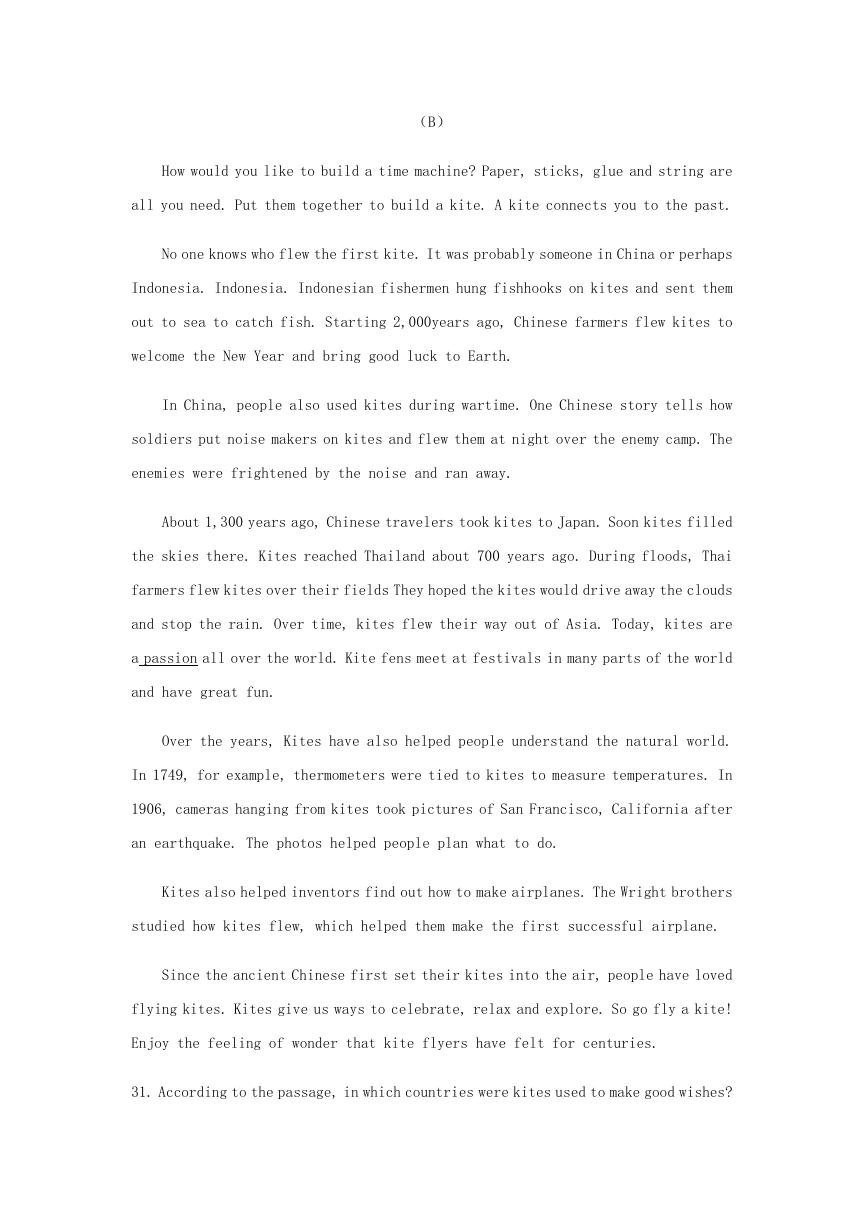
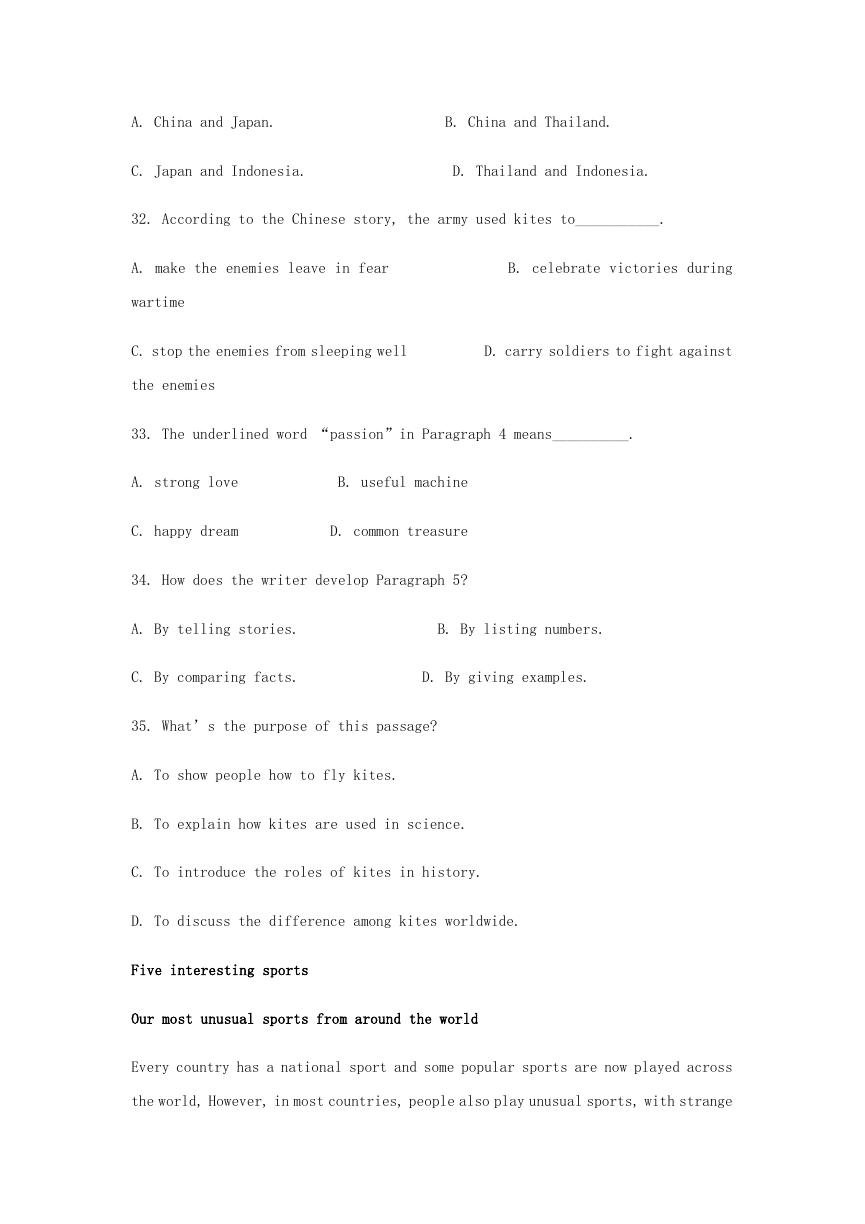








 2023年江西萍乡中考道德与法治真题及答案.doc
2023年江西萍乡中考道德与法治真题及答案.doc 2012年重庆南川中考生物真题及答案.doc
2012年重庆南川中考生物真题及答案.doc 2013年江西师范大学地理学综合及文艺理论基础考研真题.doc
2013年江西师范大学地理学综合及文艺理论基础考研真题.doc 2020年四川甘孜小升初语文真题及答案I卷.doc
2020年四川甘孜小升初语文真题及答案I卷.doc 2020年注册岩土工程师专业基础考试真题及答案.doc
2020年注册岩土工程师专业基础考试真题及答案.doc 2023-2024学年福建省厦门市九年级上学期数学月考试题及答案.doc
2023-2024学年福建省厦门市九年级上学期数学月考试题及答案.doc 2021-2022学年辽宁省沈阳市大东区九年级上学期语文期末试题及答案.doc
2021-2022学年辽宁省沈阳市大东区九年级上学期语文期末试题及答案.doc 2022-2023学年北京东城区初三第一学期物理期末试卷及答案.doc
2022-2023学年北京东城区初三第一学期物理期末试卷及答案.doc 2018上半年江西教师资格初中地理学科知识与教学能力真题及答案.doc
2018上半年江西教师资格初中地理学科知识与教学能力真题及答案.doc 2012年河北国家公务员申论考试真题及答案-省级.doc
2012年河北国家公务员申论考试真题及答案-省级.doc 2020-2021学年江苏省扬州市江都区邵樊片九年级上学期数学第一次质量检测试题及答案.doc
2020-2021学年江苏省扬州市江都区邵樊片九年级上学期数学第一次质量检测试题及答案.doc 2022下半年黑龙江教师资格证中学综合素质真题及答案.doc
2022下半年黑龙江教师资格证中学综合素质真题及答案.doc